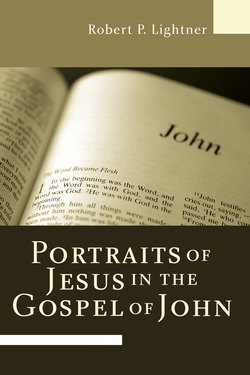Читать книгу Portraits of Jesus in the Gospel of John - Robert P. Lightner - Страница 12
На сайте Литреса книга снята с продажи.
Provision and Protection
ОглавлениеPortrait 8
John 6:1–21
Come up close so you can see clearly this portrait of Jesus. Notice surrounding Him are many people. There seems to be a lot more men than women or children. I wonder why that is the case. The disciples are standing close by Jesus. They seem to be disturbed about something. Some of them look nervous and on edge. Why? Jesus is talking to them. Oh, there is Peter elbowing his way to Jesus. He is talking to Him. Now the large crowd is seated. They all seem to be very orderly. Let’s look at the account of this incident in the Bible, John chapter 6. In this chapter we will witness two miracles performed by Jesus. One is on the land and the other on the sea.
The Miracle on the Land, vv. 1–15
John placed the time this miracle was performed as “after these things.” He used this expression a number of times in his Gospel. It did not mean that what follows took place immediately after what had just happened. The phrase describes an indefinite length of time. In this case, he most likely was referring to the Passover Feast of one year before (5:1). That same Passover Feast was being observed when Jesus miraculously multiplied a little boy‘s lunch to feed over five thousand (6:4).
At the place where I grew up in Pennsylvania bread was called “the staff of life” by the older folks. All over the world bread does seem to be a staple food. People from various countries have different kinds, shapes, and textures of bread. Though high in carbohydrates, it has sustained life all over the world as perhaps no other single food item has done.
Luke’s record of this same miracle (Luke 7:10) tells us the “other side of the sea” John referred to was the east side of the Sea of Galilee. This same body of water was earlier called Gennesaret and then later it was called Tiberias because a town by that name was built on its shore. The place where Jesus went on the other side of the Sea was a mountain near Bethsaida. He went there with His disciples to get some reprieve from the crowds following Him.
As the Son of God, Jesus knew, of course, what He would do there that would be of great benefit for the disciples and those who came there to receive His blessing and benefit.
Why were all these people following Jesus? Did they want to accept Him as their Savior? Did they wish to make public that He was their Lord? Probably, neither of these. John tells us they followed because they saw and probably heard how Jesus was healing the sick and even raising the dead. Naturally, all of us would be attracted to someone today who was not just claiming to do these things but was truly doing them before our very eyes. So we cannot fault those people for following Jesus for that reason.
From where Jesus and His disciples were on the mountain they could see the large crowd below. That is when Jesus said to Philip, “Where can we get bread to feed all these people?” He knew the people were tired and hungry and He knew too that before they could listen to Him and learn from Him, they needed to have food.
Why did Jesus ask this question of Philip? Did Jesus not know that He would perform a miracle there and satisfy the people’s hunger? Of course, Jesus knew all about everything He, the disciples, and the people would do. This question to Philip was to put his faith to the test (v. 6).
Philip may or may not have been thinking about where they could go to buy bread for the crowd, which was the question first raised. He was from the area and would have known, most likely. Finances were on his mind. He said to Jesus “two hundred denarii” would not be anywhere near enough to feed them all even if each one ate only a small amount (v. 7). One denarius which was a Roman coin was worth what the common laborer would get for one day’s wages.
Had Philip forgotten who Jesus was? Did he forget about His miracle-working power? How could he have forgotten so soon how Jesus turned water into wine? What about His healing the nobleman’s son and the man who had not walked for thirty-eight years? It is easy, is it not, to ask such questions of someone else. But we too oftentimes forget what God has done for us in the past. Jesus has not changed. He is still the One with divine power and He can do “exceeding abundantly beyond all that we ask or think, according to the power that works in us” (Ephesians 3:20).
Andrew at least reminded Jesus about the small lad with five barley loaves of bread and two fish. But then he said in essence, What difference does that make? There’s no way such a small lunch could feed this crowd. Maybe we can detect a little faith in Andrew’s statement. It is almost as though he implied this: “But you can multiply that so there will be enough. We saw You perform other miracles just days ago.”
Immediately after Andrew’s word, Jesus said to him and all the others, “Have the people sit down” (v. 10). This meant they were to recline as they normally did to eat. The disciples did not hesitate or ask any more questions but somehow got the message to that large crowd. And they all sat down on the lush green grass. There were about five thousand men there besides women and children (cf. Matthew 14:21).
